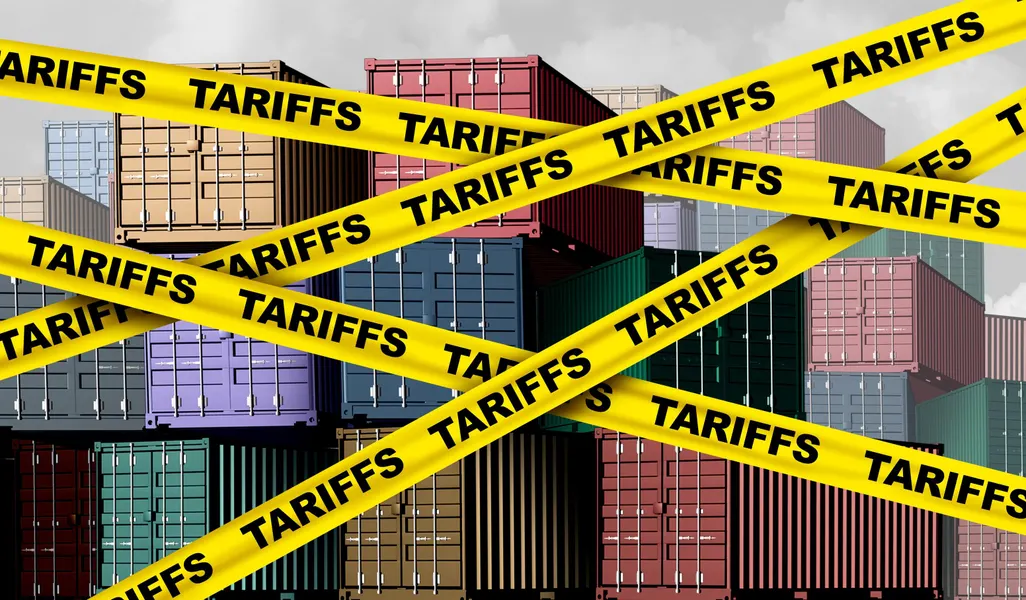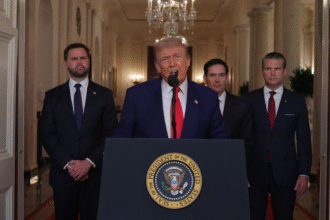The economy relies on thousands of local operations.
Tariffs are really taxes on imported goods. This can have a significant, often negative, impact on small and local businesses across the U.S.
The effects are broad, touching everything from costs and competitiveness to survival itself. American consumers end up paying for tariffs through higher prices on imported goods and even on some domestically produced goods that compete with imports.
“This additional tax burden is catastrophic to our business. We’ve already raised our prices as much as possible to absorb previous tariff increases. There’s a limit to how much we can increase prices before we price ourselves out of the market.” – Emily Ley of Simplified Stationery told CBS News
Key Impacts on Small and Local Businesses

Rising Costs Mean Less Profit Margins
Tariffs increase the price of imported goods and materials. For small businesses, which often operate on thin profit margins and rely heavily on cash flow, these added costs can be devastating. Many small businesses import essential components or finished products, and the new tariffs can sharply raise their expenses, sometimes by double-digit percentages.
Limited Ability to Absorb or Pass on Costs
Unlike large corporations, small businesses have less flexibility to absorb higher costs or negotiate better deals with suppliers. They often face a difficult choice: raise prices for customers (risking lost sales), or swallow the costs (risking profitability or even survival). Some industries, like toys or specialty foods, have been especially hard hit, with owners reporting that tariffs threaten their ability to stay open.
Supply Chain Disruptions
Tariffs can disrupt established supply chains, forcing small businesses to scramble for alternative suppliers, often at higher costs or with lower reliability. For many products, especially those not produced domestically (like cocoa or certain electronics), there are no easy substitutes.
Uncertainty and Planning Difficulties
The unpredictable nature of tariff policy-sudden announcements, pauses, or retaliatory measures-creates uncertainty that makes it hard for small businesses to plan inventory, pricing, or hiring. This uncertainty can lead to canceled orders, delayed investments, and a general hesitancy to grow or expand.
Reduced Competitiveness
While tariffs are intended to protect U.S. manufacturers, many small businesses depend on imported goods or components. Higher costs can make them less competitive against larger firms that can better absorb or manage these increases, or against foreign competitors not subject to the same tariffs.
Inflation and Consumer Demand
Tariffs contribute to inflation, raising prices for both businesses and consumers. As household budgets tighten, demand for goods and services can fall, further hurting small business sales. Some estimates suggest tariffs could cost the average American household over $2,600 a year.
Survival at Risk
Surveys show nearly two-thirds of small business owners believe tariffs will hurt their companies, and a significant minority fear they may not survive the next few years if the trade environment does not improve. Businesses without access to financing are especially vulnerable, with some already reporting layoffs, canceled expansions, or even bankruptcy filings.
Who Ultimately Pays Tariff Taxes?

While tariffs are paid directly to the U.S. government by domestic importers-typically American companies that bring foreign goods into the country-the economic burden of these taxes is usually passed down the supply chain. This means:
- Importers (U.S. businesses) pay the tariff at the border: When goods arrive in the U.S., the importing company pays the tariff to Customs and Border Protection.
- Costs are typically passed on: Importers often pass these higher costs to their customers, either other businesses or end consumers, by raising prices.
- Consumers ultimately bear the burden: Most mainstream economists agree that, in practice, American consumers end up paying for tariffs through higher prices on imported goods and even on some domestically produced goods that compete with imports.
- Foreign exporters rarely pay: Although foreign exporters may sometimes lower their prices to remain competitive, research shows that, especially with recent U.S. tariffs, the vast majority of the cost is borne by U.S. firms and consumers, not by foreign sellers.
Are There Any Benefits of Tariffs
Americans may see some benefits from tariffs, such as more competitive U.S. products, increased government revenue, and protection for certain industries. However, these are typically outweighed by higher prices, reduced economic growth, and fewer job opportunities for most households.

Here are a few potential benefits that Americans may experience:
1. Incentives to Buy American-Made Products
Tariffs make imported goods more expensive, which can create new incentives for U.S. consumers to purchase American-made products instead. This can help domestic manufacturers by making their goods more competitive compared to imports.
2. Increased Federal Revenue
Tariffs generate significant revenue for the federal government. In 2025, tariffs are projected to raise $166.6 billion in additional tax revenue, making them the largest tax hike since 1993. Over the next decade, tariffs could generate trillions in revenue, which could be used to reduce federal debt or fund government programs.
3. Potential Protection for Certain U.S. Industries
By making imported goods more expensive, tariffs can provide a temporary shield for some U.S. industries facing foreign competition. This protection may help preserve jobs in specific sectors, at least in the short term.
4. Leverage in Trade Negotiations
Tariffs can serve as a bargaining tool in trade negotiations, allowing the U.S. to push for more favorable terms or to address unfair trade practices by other countries.
Who Are There Any Winners in Tariffs
A minority of small businesses that compete directly with foreign imports, or that produce goods not reliant on imported materials, may benefit from tariffs if they can raise prices or gain market share. However, these cases are exceptions, and the broader impact is negative for most small and local businesses.














